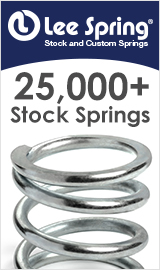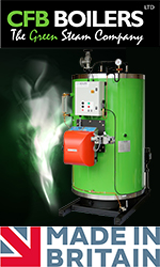Prolonging the service life of a control valve through proper selection and operation
Control valve usually known as the final control element is integral equipment in the oil and gas and process industries because they are used to control the flow of fluids. This is due to the fact that it is the final element that ultimately manipulates the value of the variable in the control process. It alters the value of the manipulated variable in response to an output signal from a controller whether automatic, manual or by direct human action.
The control valve has two main parts namely the valve body and the valve plug and they differ in geometry and material of construction. The combined body and plug geometry determines the flow properties of the valve. The valve flow differs in design like the through-flow types and the blending and stream-splitting types. Likewise, valve seats differ in construction. There are the conventional and the contoured valve seat types with parabolic and quick-opening plugs whose internals can only be inspected during servicing.
A simple control loop as shown in Figure 1 is a close system consisting of selected instruments that work together as a single to control fluid flow and minimize flow control problems. From Figures 1 and 2 a simple control loop consists of a sensor which can be an orifice, thermocouple, or a venture meter, a transmitter which can be either differential pressure electro-pneumatic or pneumatic transmitter, an indicator which can be a pressure gauge, level gauge or temperature gauge, a transducer which converts the reported signal from the manipulated form, to the form understandable to the final control instrument or a positioner which gives proportion al positional action to the valve stem so as to correctly position the plug in the valve body and finally the control valve.
Some of the most common valves utilized in industries are:
- Ball valves
- Gate valves
- Butterfly valves
Ball Valves:
These are stop valves that use a ball to stop or start the flow of fluid. When the valve handle is operated to open the valve, the ball rotates to a point where the hole through the ball is in line with the valve body inlet and outlet. When the valve is shut, which requires only a 90 degree rotation of the hand wheel for most valves, the ball is rotated so the hole is perpendicular to the flow openings of the valve body, and flow is stopped. Most of ball valves are of the quick acting type, but many are planetary gear operated. This type of gearing allows the use of relatively small hand wheel and operating force to operate a fairly large valve. The gearing however increases the operating time for the valve. Ball valve is normally found in the following systems: desalination plants, trim and drain, air, hydraulic, and oil transfer etc. It is used for general service, high temperature conditions and slurries.
Gate Valves:
Gate valves are usually used when a straight line flow of fluid and minimum restriction is desired. They are also named because the part that either stops or allows flow through the valve acts somewhat like the opening and closing of a gate. When the valve is wide open, it is fully drawn up into the valve, leaving an opening for flow through the valve the same size as the pipe in which the valve is installed. Therefore, there is little pressure drop or flow restriction through the valve. Gate valves are not usually suitable for throttling purposes because the control of flow would be difficult due to valve design and since the flow of fluid slapping against a partially open gate can cause serious damage to the valve. Gate valves used in steam systems always have flexible gates. The reason is to prevent binding of the gate within the valve when the valve is in close position. When steam lines are heated, they will expand causing some distortion of valve bodies. If a solid gate fits snugly between the seat of the valve in a cold steam system, when the system is heated and pipes elongate, the seats will compress against the gate, wedging the gate between them and clamping the valve shut. This problem is overcome by use of a flexible gate. This allows the gate to flex as the valve seat compress it, thereby preventing clamping.
Butterfly Valves:
The butterfly valve is used in a variety of systems aboard vessel. These valves can be used effectively in salt water, lube oil and fresh water systems. The butterfly valves are light in weight, relatively small, quick acting, provides positive shut-off, and can be used in throttling. This valve has a body, a resilient seat, a butterfly disk, a stem, packing, a notched positioning plate, and a handle. The resilient seat is under compression when it is mounted in the valve body, thus making a seal around the periphery of the disk and both upper and lower points where the stem passes through the seat. Packing is provided to form a positive seal around the stem for added protection in case the seal formed by the seat should become damaged. Butterfly valves are easy to maintain. The resilient seat is held in place by mechanical means, and neither bonding nor cementing is necessary, because the seat is replaceable, the valve seat does not require lapping, grinding, or machine work.
Control Valve Operation
For the effective operation, controlling and maintenance of a valve, certain activities are to be well known and acquainted with to an operator. The most important operations are as follows;
- How to Line-up a Control Valve
- How to Stroke a Control Valve
- How to By-pass a Control Valve
To line-up a Control Valve:
Lining up of process control valve is just the commissioning of the isolation valves at its terminals. Operators need to know the location of every valve in the unit. That is the first thing a fresh trainee should do. Line tracing, knowing the chemical and physical properties of materials, and process equipment and chemistry knowledge is very essential to everyone who works therein.
- Always confirm that the instrument air is available foe the valve use (if air actuated).
- Commission the isolation valves.
- Always notify the panel operator the process status of the valve.
To Stroke a Control Valve:
Stroking of control valve is an action carried out jointly between the field or unit operator and the control room operator. It is the opening and closing of the valve in isolation to inspect whether it is responding correctly or not with the indications. The panel operator alters the valve positions and the unit operator visualises the position. Instruments are air actuated because they are pneumatic. So always confirm that the air is readily lined up to the control valve through the air filter.
- Ensure that the control valve is isolated.
- Ensure that both the unit operator and the panel operator have communication devices.
- Open the valve to the maximum and close it suddenly, then reopen it to any position and confirm the real opening out onsite. It is recommended that the percentages of the opening can range from below 0%, 25%, 50%, 75%, 100%, and above 100%.
- Return the valve to a close position while leaving it in the isolated status.
When errors are discovered the values should be recommended for rectification. The maintenance personnel should readily check to confirm the faults and urgently address it. When that is done the valve should be lined up for operation.
To By-pass a Control Valve:
When a valve during operation is to be by-passed, care must be taken not to disturb the flow, pressure or whatever parameter it controls. Valve by-passing is the diversion of the floe direction of the process stream away from the valve.
- Inform the panel operator your readiness to divert the valve flow to the valve by-pass.
- Gradually commission the by-pass valve (globe) to give a slight increase in flow. The flow increase can be noticed on the side indicator.
- Thereafter start to block in the downstream valve of the control valve while increasing the percentage opening of the by-pass valve so as to maintain the same flow rate through the by-passing.
Valves are by-passed when they are faulty or when more flow than the maximum flow through the control valve is needed. This requirement is usually abnormal and is applied in rare occasions. By-passing valves are not regular control valves, therefore as soon as the fault is rectified or the flow stabilises, the by-pass valves should be returned to its close position. Most by-pass valves are globe valves because they are regulatory in operation.
Conclusion
Good understanding and operation will go a long way towards prolonging the service life of the control valve. Team work and management between the field operator and panel operator is integral.
References
Nwaoha, C. (2009). Improving valve performance. Pipeline and Gas Technology, March, 56–59.
Nwaoha, C. (2008). Extending Control Valve Life By Proper Selection And Maintenance. of Pipeline & Gas Journal, November, 78 – 80.



























































































































